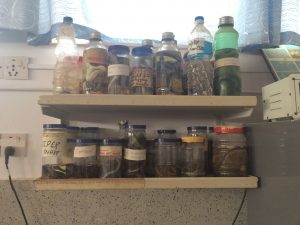Today, I am including a blog post written by my daughter, which she wrote for her missions team blog. She is on a medical missions trip in Nepal for three weeks with a group of nursing and pre-med students. Her team is blogging each day, with the students taking turns writing the posts and also leading devotions each night. I am enjoying reading their reflections. Natalie’s first blog post, which she had to write very quickly, is below. This is their first day of observing in the hospital; the students will be taking turns rotating through various departments. Natalie’s first rotation was the maternity ward. And, I just received a message from her: her second day was in the surgical ward where she witnessed several surgeries. She told me she loves it there and doesn’t want to leave. I told her she has to finish school or else she’ll just be a Himalayan mountain bum… which may not sound too bad on some days, haha. Of course, she is coming back to finish (she loves medicine too much, she says) but she is having a fabulous time, and learning and growing exponentially through this experience.
MEDICINE IN THE MOUNTAINS – DAY 1
Today was a day we’ve all been waiting for; we started our rounds at United Mission Hospital! The nursing students reported bright and early at 6:45 while the pre-med students slept in to be at the morning report at 7:45. Today, Maddie helped out in the medical ward, Rachel worked in pediatrics and Kayla assisted in the surgical area. The assignments for the pre-med clinical rotations were as follows: Surgery- Rachel, Orthopedics-Hannah & Sam, Pediatrics- Sam & Gabby, Medical- Ellie & Jacob and Maternity- Natalie.
As soon as I stepped into the maternity ward this morning, I was struck with the tranquility. Quite different from the U.S., all expecting and new mothers are given one bed with curtains that are drawn up when doctors examine patients. There is no gentle hum of fetal heart monitors nor the steady drip of an IV; the cries of newly born babies, the soft soothing of a nursing mother and the controlled, pained breathing of a mother in labor fill this room. In between following up on a 17-year-old mother of a 1 day year old and checking another mother’s dilation, Dr. Shirley, an OB/GYN expat from England, commented that no epidurals are given, as there is no cultural expectation for painkillers during childbirth. Instead women rely on fantastic midwives who truly care. She said that the hospital might not look like much with its paint stripped walls and seemingly limited facilities, but due to the great compassion of doctors and nurses who take time to joke with patients and encourage, United Mission Hospital was “hospital heaven.”
After visiting all newly admitted patients and discharging a couple mothers and babies, Dr. Shirley went to the OPD, Out Patient Department. The healthcare system in Nepal is organized rather differently in the U.S. Because most patients visit the hospital when they are seriously sick and do not make appointments with an internist, the hospital is organized with intervention, rather than prevention, in mind. The OPD is divided into the men’s, women’s and children’s clinics. There are no appointments; rather, a set amount of tickets are given out per day per ward. For the women’s clinic, 140 patients are first screened, and then divided among 5 rooms with different general practitioners and specialties. Patients do not need to be referred to three different specialists for three different body parts, and general practitioners are able to consult with different specialists throughout the day.
Two gynecology cases especially struck me today. One woman had been just told that she was 11 weeks pregnant, and this was a great surprise to her as her previous child had been born 14 months earlier. Unfortunately, this was not happy news for the patient; in Nepali culture, it is looked down upon to be pregnant so soon after a previous child.The woman appeared as if she wanted to cry and didn’t show any sign of gladness. Dr. Shirley tried to encourage her as much as she could, but it seems as if this woman will choose abortion to avoid any possible shame on her family. It was difficult to see the gift of a child met with such dismay.
Another patient had been waiting on the results of a breast ultrasound on lumps discovered a few weeks earlier. Dr. Shirley gently explained to the patient and her daughter that the results were perhaps the worst prognosis in this situation: the lumps were cancerous. The patient and her daughter were caught off guard, silent and shocked. I thought it was interesting at first that two exams occur in one room, with two doctors each examining one patient, even if one had a gynecology exam. However, I began to see the advantage of this setup when the second patient began weeping at the news of the cancerous lumps in the first. The empathy displayed in this hospital is truly remarkable– not only from doctor to patient, but from patient to patient.
To my great joy, just as I was about to end the day, a mother had just begun active labor. And so, thirty minutes later, I witnessed the most amazing thing I had ever seen: the miracle of life. I still haven’t quite processed it, but it was glorious and beautiful. It was a testament to the fact, that despite all the grief and hurt and pain that patients feel and that even though we can feel so deeply and sometimes there’s nothing in our power to heal patients, there is much joy and great beauty in the midst of it all. God is good.
(Below are some of the photos she posted and her captions:)

The mountains surrounding the hospital are stunningly beautiful

The Pathology Lab

These bottles containing different species of snakes warn against snake bites in the Emergency Department

Scenic views from the hospital guesthouse
*
*
